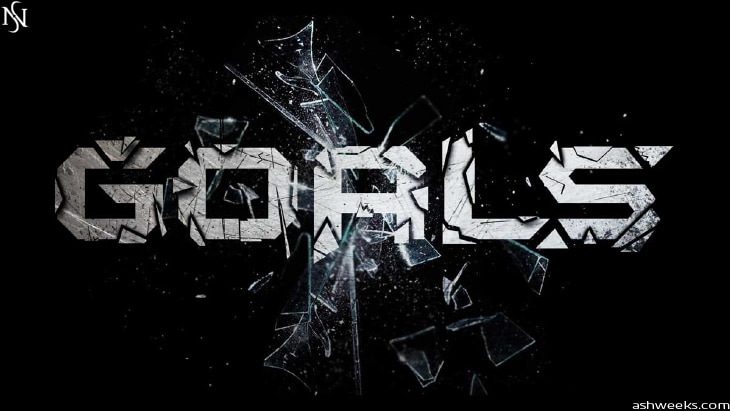What is the meaning of life? What is your purpose? Why are you here? Are you here for a reason? Is there a divine entity looking down on you? What happens after you die?
The way you answer these questions determines the overall context for everything you do in life. It is not often that people sit down and seriously consider these questions but I’m here to tell you that it’s worth putting in the time and effort to figure it out, and I will tell you how I have gone about it.
This is the last post of a seven-part series on how to find purpose and direction in your life:
Part 1: Why It’s Worth Knowing
Part 2: Overview
Part 3: Know Yourself
Part 4: Build Strong Foundations
Part 5: How Should We Live?
Part 6: Why Purpose Doesn’t Interest You yet (and When It Will)
Part 7: Discovery
Putting It All Together
If you’ve made it this far, after working your way through the tasks set in the previous posts, well done! It’s not an easy process and it’s time-consuming.
Now it’s time to bring together all of your notes from the previous posts and have them laid out in front of you (either bring the paper together or print them out if you did it digitally). You should have:
- Patterns and insights from Your Story and your foundation-level motivations
- Your Life CV
- Beliefs about the world
- Most important values
- Summary of the most influential moments in your personal history
- Talents and skills
- Name, age, gender, sexuality, etc
- Topics, events and actions that elicit a strong emotional response from you (e.g. helplessness, anger, sadness, excitement, pure joy)
- Topics you would love to learn more about if only you had more time
- Any existing labels you can use for yourself (e.g. minimalist, atheist, employee)
- How we should live
- Your context: what you think life is about and what is important
- Your notes on eudaimonia — striving for continuous fulfilment
- Your notes on maximising the value you get out of life
- The values you think are important to live by
- Insights from Maslow’s Hierarchy of Needs and the top levels of growth, personal development, maximising your potential, and helping others to do the same
The above is a lot of material and should give you an excellent picture of two main areas: (1) who you are, what you stand for, and what is important to you; and (2) your overall picture of the world, including your beliefs about existence, what values to live by, and the general picture of human existence.
Deciding on a Purpose or Direction
Now you want to turn the above material into a mission statement — a sentence or two that says what direction you will take in life. Note: as you experience new things, your identity or perception of reality may change and your mission statement should be updated to reflect this.
When I was searching for purpose and direction I came across Steve Pavlina’s site. In his post on the topic, he outlined two mains methods of creating the mission statement.
Method 1: Emotional
This method relies on the notion that passion and purpose go hand in hand. This is why I suggested in a previous post to think of topics, actions, or events that elicit a strong emotional response from you. The more open you are to this process, and the more you expect it to work, the faster it will work for you.
Here’s what to do:
- Take out a blank sheet of paper or open up a word processor where you can type
- Write at the top ‘What is my true purpose in life?’
- Write an answer (any answer) that pops into your head. It doesn’t have to be a complete sentence, a short phrase is fine
- Repeat step 3 until you write the answer that makes you cry. This is your purpose.
The answer you get from this process, however, depends heavily on your ability to generate good input. Essentially you search for different purpose statements and judge their quality by your emotional reaction. You need to be very clear about your overall context for life first. This is why it is important to go through the tasks in the previous posts in the series before attempting this. If you don’t have that level of clarity yet then you’ll have a hard time making this approach work successfully.
Method 2: Logical
If you’re like me and you think more logically, this method might be the better option. This is the method I used when determining my own purpose. It uses your reason and logic to work down from your context. The clearer and more accurate your context is, the easier this will be.
To identify your purpose, you basically project your entire context of reality onto yourself. Given your current understanding of reality, where do you fit in?
If you continue to use the default social/materialistic/consumerist context, at best you may end up with a weak purpose statement that addresses the basics like making money, having a family, having friends, and being nice, but there won’t be any real substance to it. If you gave it to someone else to read it, they wouldn’t come away knowing you any better.
Fuzzy context, fuzzy projection, fuzzy purpose. Clear context, clear projection, clear purpose.
My context of reality is as follows:
- There is no God or divine entity, and we are fully responsible for our actions and inactions;
- When you die you simply cease to exist;
- We have no predefined purpose encoded into us — we decide what direction we want to take in life; and
- Life is about growth, including working towards your potential, increasing beauty, experiencing, self-improvement, optimisation, understanding, and interconnectedness.
If the above context is reality, and I am a part of reality, then I simply project the context’s qualities onto myself. My role in reality/my purpose is then:
- to experience life and all it has to offer;
- to learn all I can;
- to connect with the world and everyone in it;
- to improve myself, to be the best I can be, to test my limits and then break them. To grow, evolve and optimise; and
- to help others do the same, to share my experiences with them, to share my journey, to bring out the best in the world.
After you end up with a list like the one above, you turn it into a concise version that sums up everything. A mission statement. Mine became:
My purpose is to continuously self-improve, learn all I can, connect with others, and bring out the best in the world.
This is such a simple approach that it’s easy to miss. All you’re really doing is looking at your overall context of life and projecting those same qualities onto yourself. This projection becomes your purpose, your role in reality.
This method will also help you identify problems in your context because you’ll notice that something is wrong when you project a false belief onto yourself.
Combining the Two Methods
The purpose or mission statement that you end up with should satisfy both methods. If your context is sound, you should get congruent answers from both approaches. That is, if you used the emotional method, then it should still follow that you are projecting your context onto yourself. Likewise, if you used the logical method, you should still have an emotional response to it. Perhaps not crying but it should really resonate with you. If the mission statement that you arrive at does not fit the other method then your context is incongruent. You logically think about reality in one way but you feel it in another way. For example, perhaps you hold religious beliefs but only follow them sporadically — they aren’t integrated across your entire life. In this case you have to identify the disparity, figure out where it comes from, and work it through until you can get both sides to agree or you can get clear on which one is correct.
For many people this will require rooting out incongruencies and consciously filling contextual holes, and it will take a long time before enough of those are eliminated to get sufficient clarity to define a clear purpose.
What Next?
At this point your purpose is likely to be very abstract and high-level, so be sure to check out next week’s posts on how to break it down into goals, projects, and actions.
This is the last post of a seven-part series on how to find purpose and direction in your life:
Part 1: Why It’s Worth Knowing
Part 2: Overview
Part 3: Know Yourself
Part 4: Build Strong Foundations
Part 5: How Should We Live?
Part 6: Why Purpose Doesn’t Interest You yet (and When It Will)
Part 7: Discovery





